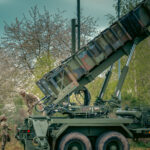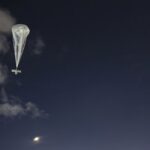The Navy has issued a $646 million contract option to Raytheon for four additional AN/SPY-6(V) radars. Defense officials confirm this is the fourth option exercised under a five-year hardware, production, and sustainment agreement signed in 2022. The award pushes the running total to 42 shipsets, all scheduled for delivery before the end of fiscal year 2028. According to industry sources, the service timed the action to hold the production line at peak tempo as Flight III destroyers advance through the yards. The money covers sensor hardware, spares, and program management.
Current planning calls for these radars to outfit two new-build Arleigh Burke Flight III destroyers and two Flight IIA back-fit hulls. Our analysis shows the Navy deliberately splits each yearly buy between new construction and modernized ships to smooth shipyard loading. The approach limits block obsolescence and shortens the training curve for crews that move between hulls. Defense officials add that installation windows have already been locked in with the private yards handling the upgrades.
SPY-6 Radar Production and Delivery
The contract modification keeps the Andover, Massachusetts, Radar Development Facility running at capacity for another 36 months. Raytheon describes the site as a fully automated “factory-in-a-box” that can build, test, and seal a radar module in under four hours. The company is also advancing parallel programs, including production of additional Silent Knight radars for special mission aircraft. That speed supports what the company calls “demand pacing” – a lean-production model that scales output up or down without new tooling. Sub-assemblies arrive from partners in Arizona, Indiana, Maryland, Rhode Island, and six other states. The distributed model supports roughly 1,800 jobs, most of them in advanced manufacturing.
AN/SPY-6 Radar Scalable Design
The SPY-6 family sits at the center of the Navy’s surface-combatant modernization plan. Each sensor is a mosaic built from identical two-foot Radar Modular Assemblies. Crews bolt the blocks together, connect power, and load software. That common architecture lowers spares holdings and simplifies in-port maintenance. Our analysis shows the Navy pays about 41 percent less per square foot of aperture than it did for the legacy SPY-1 series once life-cycle costs are included.
The modular approach also lets designers scale the sensor to match hull size. Presently the family includes:
- AN/SPY-6(V)1 – Four fixed panels. Primary sensor for Flight III destroyers.
- AN/SPY-6(V)2 – Single rotating face branded Enterprise Air Surveillance Radar; assigned to LHDs and Nimitz-class carriers.
- AN/SPY-6(V)3 – Three fixed panels for Ford-class carriers and Constellation-class frigates.
- AN/SPY-6(V)4 – Four fixed panels sized for Flight IIA destroyer back-fits.
Flight III destroyers pair the (V)1 with Aegis Baseline 10, enabling full-volume search while simultaneously tracking ballistic, hypersonic, and surface threats. Test data released by Program Executive Office Integrated Warfare Systems shows a fifty-percent detection-range increase against low-flying cruise missiles compared to SPY-1D(V). The Navy argues that extra margin buys commanders more engagement time and broadens defended assets.
SPY-6 Radar Integration on Navy Ships
The Navy plans to equip more than sixty ships with SPY-6 variants by the early 2030s. Two vessels – USS Jack H. Lucas and USS Richard M. McCool Jr. – have operational sets today. Five additional hulls are in the integration queue. Yard workers install the arrays first, then run fiber to the combat information center, and finally certify cooling and power subsystems. The job demands strict sequencing, yet lessons learned on the pilot ships have shortened the overall timeline from 18 to 13 months.
An earlier $536 million integration and production-support contract, awarded on June 3, funds training devices, software refreshes, and on-site engineering teams. Industry sources say the support package forms the bridge between discrete production buys and whole-life sustainment. Fleet technicians now receive virtual reality walk-throughs before arrival, which cuts on-board troubleshooting time by one-third.
Supply Chain Resilience for SPY-6
Raytheon and the Navy negotiated yearly material buys covering gallium nitride semiconductor wafers, low-observable radome panels, and solid-state transmit-receive assemblies. Bulk orders lock in pricing and protect suppliers from demand shocks. Our analysis shows the policy reduced average subsystem lead time by 22 percent across the 2024 build lot.
Program officials track schedule risk with a simple metric: radar delivery promised versus hull construction milestones. The metric currently sits at 1.05, meaning components reach the yard roughly one month ahead of need. A value below 1.0 would indicate latency. The integrated master schedule calls for maintaining that buffer until at least FY-27, when the Flight III line peaks at four destroyers per year.
Training and Operational Advantages of SPY-6
Crews moving from a (V)1 destroyer to a (V)4 back-fit see the same user interface, down to button placement and track color codes. Fleet feedback indicates operators qualify on the new system in roughly half the time required for SPY-1D(V). Navy Leadership views this as a core advantage in an era of frequent crew swaps and reduced shore-based trainer availability.
Strategists tie the radar rollout to the retirement of the Ticonderoga-class cruisers. Those ships carried the largest SPY-1 variant and served as air-defense commanders for carrier strike groups. Their departure leaves Flight III destroyers to assume control. The high-power (V)1 aperture, coupled with Baseline 10’s multi-layered fire-control loop, provides the needed radar resource to handle that mission without a cruiser present.
Future of SPY-6 Radar Platforms
Preliminary DDG(X) concepts all show a four-panel SPY-6 “fence.” Designers reserve growth margin for module swaps that double aperture size without altering topside geometry. A common sensor across destroyer generations eases software refreshes and fleet-level threat model updates. Defense officials argue that the plan keeps sensor development costs flat as hull count rises. The Navy is applying similar forward-planning principles to other critical programs, such as sustaining the SM-6 missile production line amid funding uncertainties.
SPY-6 also feeds national integrated air and missile defense. The radar’s digital beamforming supports simultaneous engagement of ballistic and hypersonic threats. Data moves through Cooperative Engagement Capability links, allowing one ship to guide another ship’s missile. Early fleet exercises demonstrated successful over-the-horizon shots using shared tracks, something the legacy radar could not manage with the same clarity.
SPY-6 International Interest and Collaboration
Australia and Japan already field Aegis systems and operate ships of comparable size. Industry sources note both governments requested pricing data for scaled SPY-6 arrays under foreign military sales channels. While no formal negotiations exist, the interest may lead to co-production opportunities that would further spread fixed costs. Similar integration opportunities are emerging in undersea warfare, where GD won an $882M sonar array contract, underscoring allied navies’ push to align procurement of advanced sensor systems across surface and subsurface fleets.
From an operational-energy standpoint, SPY-6 demands more power than SPY-1 but consumes less per unit of detection range. The Navy counters the extra load on Flight IIA destroyers with new hybrid electric drive modules installed during back-fit periods. The decision avoids large turbo-generator upgrades and helps the hulls stay under design displacement limits.
Cybersecurity and Maintainability of SPY-6 Radar
Each RMA contains a secure-boot microcontroller that prevents unsigned firmware from loading. Fleet cyber teams can push patches while underway through the existing Consolidated Afloat Networks and Enterprise Services architecture. This improves vulnerability response speed, an area where the aging SPY-1 stack faced challenges.
Stock rooms will carry a single RMA part number regardless of radar variant. Sailors unbolt a faulty module, slide in a spare, and reseal the coolant loop in minutes. Feedback from Jack H. Lucas shows mean-time-to-repair dropping below four hours, a figure that previously ran into days when legacy transmitters failed. Fewer unique spares cut lifecycle cost and free shipboard space for other stores.
SPY-6 Program Cost Control
Cost control remains a headline concern on Capitol Hill, yet the program stayed on track through sequestration and pandemic disruptions. Fixed-price incentive contracts account for 78 percent of hardware spend, limiting Navy exposure to overruns. Audit data released with the FY-26 budget submission puts cumulative variance at plus-or-minus 2.1 percent – well below the six-percent redline that triggers formal review.
Looking ahead, Raytheon expects to shift to spiral software increments every six months. Smaller, more frequent updates align with the Navy’s objective of shortening kill-chain latency and adapting faster to novel threats. Each increment enters a land-based test site in Wallops Island before fleet push. Operators preview new features and file change requests in real time, a process that compresses feedback loops.
The $646 million option therefore acts as more than a radar purchase. It locks in production cadence, protects the supply chain, and reinforces a broader modernization portfolio that runs from training systems to future destroyer design. Our analysis shows the Navy remains on course to field its full radar requirement by early next decade without facing a production valley or sudden price spike.
REFERENCES SOURCES
- https://www.navaltoday.com/2025/06/10/raytheon-to-continue-spy-6-production-for-us-navy-under-646m-contract-option/
- https://thedefensepost.com/2025/06/11/us-navy-raytheon-spy6-radars/
- https://militaryembedded.com/radar-ew/rf-and-microwave/radar-pact-continues-between-us-navy-and-raytheon-under-646-million-contract
- https://www.bairdmaritime.com/security/weaponry/raytheon-awarded-additional-646m-contract-for-us-navy-radars
- https://www.govconwire.com/article/rtx-raytheom-navy-contract-modification-missile-defense
- https://virginiabusiness.com/rtx-subsidiary-wins-646m-contract/
- https://en.wikipedia.org/wiki/AN/SPY-6
- https://en.wikipedia.org/wiki/Arleigh_Burke-class_destroyer
- https://stocktitan.net/news/RTX/rtx‑s‑raytheon‑awarded‑646‑million‑hardware‑production‑and‑sustainment‑y5sw4s0p7wim.html
- https://virginiabusiness.com/rtx‑subsidiary‑wins‑646m‑contract/
- https://militaryembedded.com/radar‑ew/rf‑and‑microwave/radar‑pact‑continues‑between‑us‑navy‑and‑raytheon‑under‑646‑million‑contract
- https://www.rtx.com/news/2025/06/03/rtxs‑raytheon‑awarded‑536‑million‑us‑navy‑contract‑for‑spy‑6‑family‑of‑radars
- https://www.navalnews.com/naval‑news/2025/06/raytheon‑awarded‑536‑million‑us‑navy‑contract‑for‑spy‑6‑family‑of‑radars/
- https://www.thedefensepost.com/2025/06/11/us‑navy‑orders‑raytheon‑spy‑6‑radars‑646m‑deal/
- https://www.navaltoday.com/2025/06/10/raytheon‑to‑continue‑spy‑6‑production‑for‑us‑navy‑under‑646m‑contract‑option/
- https://news.usni.org/2022/03/03/report‑to‑congress‑on‑u‑s‑navy‑destroyer‑programs
- https://crsreports.congress.gov/product/pdf/RL/RL32109
- https://www.defenceconnect.com.au/maritime‑antisub/12361‑us‑navy‑awards‑raytheon‑technologies‑677m‑contract‑to‑continue‑spy‑6‑radar‑construction
- https://www.defenceconnect.com.au/maritime‑antisub/11993‑updated‑ddg‑x‑report‑reveals‑plans‑for‑reduced‑us‑large‑surface‑combatant‑fleet
- https://seapowermagazine.org/raytheon-is-cranking-out-spy-6-radars-for-the-fleet/
- https://www.rtx.com/raytheon/what-we-do/sea/spy6-radars



